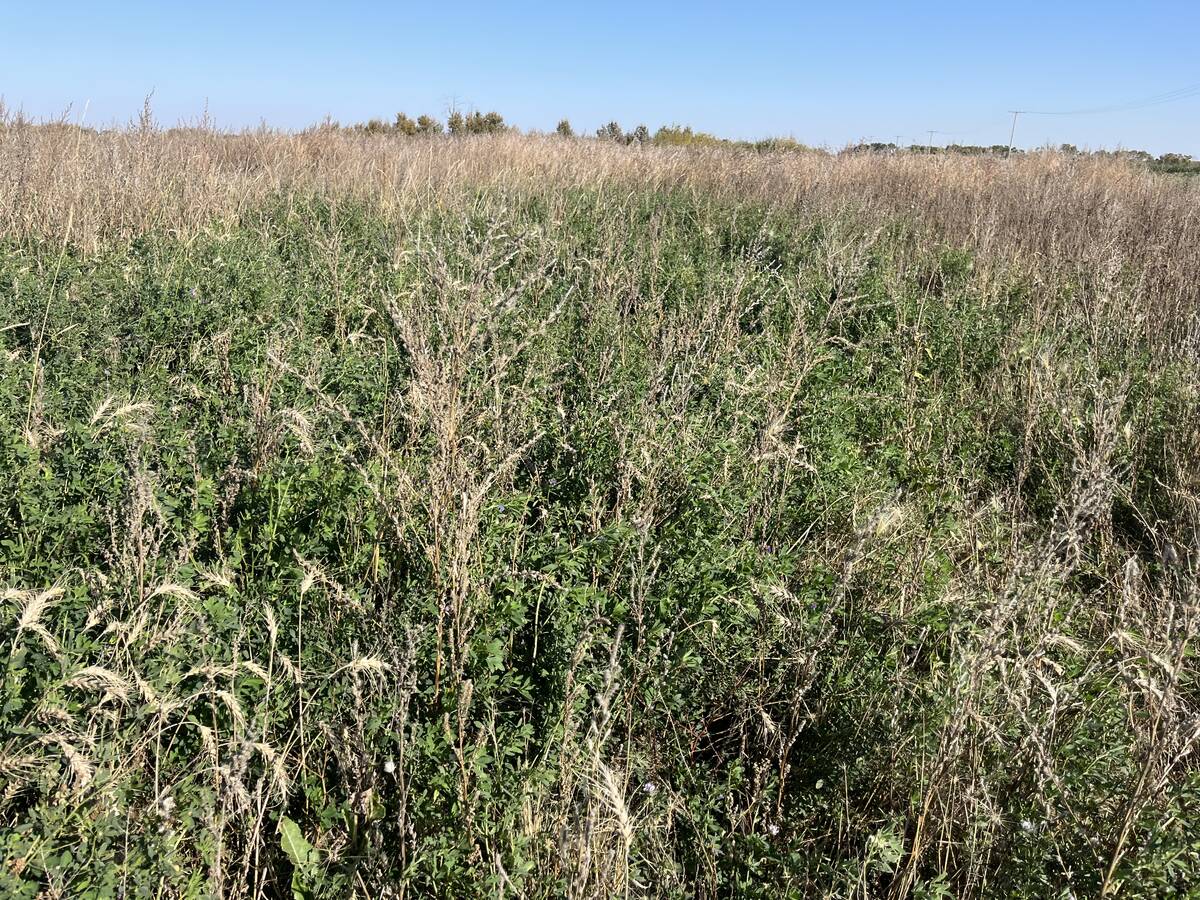An international panel reviewing the first BSE case in the United States said the incident should be considered a North American problem and should not be used to prohibit trade.
“The first case of BSE in the United States cannot be considered in isolation from the whole cattle production system in North America and should not be dismissed as an imported case,” said the 11-page report released last week.
The five-person committee with European and American representation advised close collaboration among agencies in Canada, the U.S. and Mexico for proper management of BSE.
Read Also

Dormant seeding forages frees up farmer time and gets ahead of weeds
Dormant seeding isn’t common practice and can appear daunting, but there are some techniques to give Manitoba farmers an edge
The same panel reviewed the Canadian case last summer.
It was more critical of the U.S. than the Canadian situation, citing inadequate traceback on the American side. However, it said the investigation was thorough and that it believed the case was likely the only one from the Canadian herd of origin.
The U.S. Department of Agriculture is reviewing the panel report, which suggested the U.S. take a lead role in changing the trade restrictions that surround BSE.
“The subcommittee recommends that the U.S. should demonstrate leadership in trade matters by adopting import-export policy in accordance with international standards, and thus encourage the discontinuation of irrational trade barriers when countries identify their first cases of BSE,” it said.
Neil Jahnke, president of the Canadian Cattlemen’s Association, said the report was positive. He believes it is a step toward reopening borders to live cattle this year.
“I’m more optimistic after this report than I was before,” he said.
Saskatchewan agriculture minister Clay Serby said the report strengthened Canada’s position that the U.S. should reopen its border to Canadian live cattle.
Recommendations for more testing and a broader feed ban drew criticism from American officials. They said the more serious chain of BSE events in Europe influenced the panel’s opinion.
“Those experiences seem to affect their view of the U.S. system,” said Gary Weber, executive director of regulatory affairs for the U.S. National Cattlemen’s Beef Association, in a news conference Feb. 4.
“We do take issue with Europeans trying to extrapolate their experience, which has been very sad, to that of the U.S., which has been distinctly different.”
A recommendation to test all animals unable to walk when delivered to slaughter plants, as well as random tests on other slaughter animals, is too much, he said.
Canada already tests all of its so-called downer animals.
Patrick Boyle, head of the American Meat Institute representing packers and processors in the U.S., said increased surveillance planned for this year should catch any other cases.
Under the world animal health recommendations, the U.S. needs to check about 500 high-risk animals each year. Last year it tested 20,000.
In addition, the committee said all specified risk material, brain and spinal cord tissue, should be eliminated from the human and animal food chain. As well, the feed ban should be extended to exclude all animal and poultry protein from all ruminant feeds, and the feed testing program should be improved to ensure no ruminant protein found its way into cattle feed.















